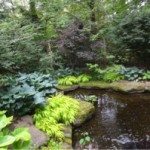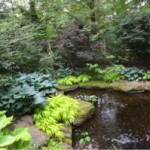 People typically embark on home renovation projects with a mind towards increasing the value of their home for resale purposes. There are different rules of thumb for the expected recoup value of various home improvements. Landscaping, however, is the only improvement that increases in value over time, whereas changes to the structure depreciate through the years.
People typically embark on home renovation projects with a mind towards increasing the value of their home for resale purposes. There are different rules of thumb for the expected recoup value of various home improvements. Landscaping, however, is the only improvement that increases in value over time, whereas changes to the structure depreciate through the years.
The initial cost of installing plant material is directly proportional to the size and age of the plant. Think of planting a small tree for say $80. As that tree matures over time, and grows into a major specimen highlighting the front yard, at 30 feet in stature, its value (replacement cost) will likely be over $1,000. If ‘instant gratification’ is not an issue, there is tremendous value in installing well-planned, good quality plant material to reap its value as the landscaping matures.
The American Society of Landscape Architects recommends that property owners spent about 10 percent of the home’s value for landscaping. This, of course, includes the cost of cultivating the gardens and installing plants, as well as hardscape features such as patios, lighting, arbors, paths, and water features. Given the magnitude of such an investment, the wise homeowner will invest in a landscape plan. The Association of Professional Landscape Designers can direct the homeowner to a designer nearby that has the “ecological, aesthetic and technical training to provide solutions that may not have occurred to you.”
New homeowners typically set aside a budget for home improvements and renovations. The landscape often is saved for “down the road.” Good landscape planning can take years to implement and, therefore, it is beneficial to have a professional evaluate the landscape and develop a master plan, or at least provide advice on how to stage changes to the property, at the very outset. Ignorance about health and viability of mature trees on the property can have very costly and devastating effects, as terrible storms have demonstrated.
In fact, the landscape industry includes subset niches for those who provide professional consultation about landscapes, or coaching (lending their expertise to teach homeowners how to garden their property). That large stand of bamboo that shields the potential new property
from close neighbors may in fact be a landscape nightmare, as certain bamboo is extremely invasive and quite costly and difficult to remove, or at least keep in check. If you enjoy gardening, a trained landscape designer can guide your DIY projects so that you incorporate plants best suited to your area, cultural conditions, and maintenance abilities. Homeowners intent on taking the landscape into their own hands often fall victim to one of the biggest pitfalls of landscaping: proceeding without a coherent plan. Their piecemeal approach ultimately often leads to a disorganized landscape with a hodgepodge of favorite plantings with no harmony, unity or polish. Implementing a coherent plan, over time, will enable development of a harmonious landscape while remaining within budget.
An attractive and interesting landscape – curb appeal — is the first thing that potential homebuyers see, and it may govern their interest in looking inside. But even if increasing the value of your property is of minor importance, the satisfaction and enjoyment of a nicely designed landscape – the first thing you see each time you leave your house or arrive home – undeniably will improve the quality of your life, and those who surround you.

The stunning landscape adds considerably to the value of this Baltimore County residential property. Mature contrasting specimen trees frame a simple water feature, whose edges are softened by colorful foliage perennials that make this spot a showplace.
NOV
2012
